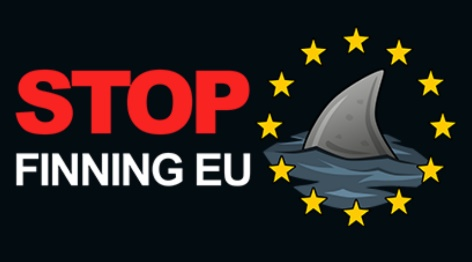The European Citizens' Initiative has been called 'the biggest innovation in transnational democracy' since the introduction of direct elections to the European Parliament more than four decades ago. We, the citizens of the European Union, now have the same right as a majority in the European Parliament and the Member States to set the political agenda for the whole continent. An instrument used diligently: since its launch in 2012, more than 100 initiatives have been filed.
While the formal right to initiate pan-European legislation remains the prerogative of the European Commission alone, the European Citizens' Initiative constitutes an instrument for agenda-setting. It opens also the door to the future of participatory politics: it is more direct, more transnational and more digital than anything ever before in the EU and has inspired many Member States to introduce similar agenda-setting instruments at home.
This is the reason why the ECI is not just another right of petition, but is more of an everyday citizens' activation right regarding the next issues to be put on the agenda of the European institutions.

| ECI requests per year | Submitted | Registered | Refused |
|---|---|---|---|
| Total |
More information on the ECI registration page.
Rules 222 and 230 of Parliament's Rules of Procedure
Complete ECI regulatory framework:europa.eu/citizens-initiative/how-it-works/regulatory-framework_en
ECI verification and certification by Member States:europa.eu/citizens-initiative/authorities-verification-and-certification-statements-support_en
The European Citizens' Initiative is sometimes compared to a Swiss army knife: a smartly designed, adaptable multifunctional tool. As the ECI is available to nearly 450 million EU citizens across 27 Member States (and across the world, if you happen to live outside the EU as an EU citizen), it has addressed the way democracy is understood and is working at the transnational level.
Based on the experiences of the almost 100 initiatives submitted between 2012 and 2019, an updated and more accessible version of the ECI came into force in 2020. A quarter of the initiatives were rejected due to the strict interpretation and application of the regulation by the Commission. However, under the new rules the organisers and the Commission are given more time for finding a solution, including the possibility of registering only the admissible parts of an initiative. More time is also given to prepare for the start of the signature collection, as well as all other steps in the process.
Additionally, the COVID-19 pandemic has challenged everybody's way of interacting, discussing and decision-making. In order to safeguard the democratic potential of the ECI, the Commission has proposed a set of coronavirus-related rules allowing for the extension of deadlines for collecting and verifying signatures and for examining successful initiatives (see Regulation (EU) 2020/1042, Commission Implementing Decision of 17.12.2020 (EU) 2020/2200 and Commission Implementing Decision of 19.2.2021 (EU) 2021/360).
In an ECI process, there are three different kinds of roles: organiser, supporter and observer.
As a group of organisers, supporters or observers, there are several aspects to think about before starting, signing or commenting. The key question is: what does a specific ECI want to achieve? What is your goal?
Do you want to propose something new to Europe? Or is your idea to remove and abolish a particular EU policy? Many things, however, are not simply black or white, good or bad: they may just need to be adjusted. So you could be mostly interested in changing parts of a law in the EU as well.
There are many ways of taking actions with an ECI, which you can use as:
- an accelerator in order to get the EU to do something new. Here you need to be very patient as it will take a long time to see this kind of ECI through to the end; you need to find an appropriate and workable legal basis first, and you need to see the public debate on your proposal as the main reward for your efforts.
- a brake to stop the EU from doing something. In this case, timing is critical, as you need to find the right moment to raise your concerns to achieve the maximum impact and support, which means that you need to gather the signatures swiftly.
- a valve with the aim of making current EU legislation better. As you want to fix a certain problem by changing specific legislation, you need to keep things simple. 'Valve' ECIs tend to be overly complex and hard to communicate, so do everything you can to stick to the main focus.
- a bargaining chip by using the ECI process as an additional element in an attempt to influence European policy-making. However, before you start such an ECI, take stock of your influence and political power independent of the initiative and check the possible additional benefits. Be clear about your intentions vis-à-vis supporters and be aware of the withdrawal option of an ECI and its timely use.
- a catalyst to build broad alliances and networks across Europe. This is an especially appropriate option when you see your initiative as an element of a longer-term strategy to bring people across Europe together and/or to prepare a European election campaign.
- a canvasser to make yourself and/or your group better known in the public sphere. In this case, you need to first identify a suitable and easily communicable substantive issue for your ECI. You should also be as open as possible about your goals to ensure that you do not deceive potential supporters.
The ECI offers many opportunities, but in the end it all comes down to your own understanding and capacities when assessing the options and limitations of an ECI. By becoming aware of the multifunctional capabilities of this transnational and participatory process, you may be able to develop realistic expectations and thereby a realistic approach to your strategy and the options you choose.
If you are not sure if the ECI is the best tool to meet your objectives, consider various aspects of your case in the Consider before you act section and read about other tools available at the European level in the Participation toolkit section.
Thinking of launching your own ECI? It will take you at least three years, probably even more (and quite a lot in terms of resources) to make it happen. However, if you are smart and careful, the process will offer you new insights and teach you many new lessons – and (hopefully) enable you to make a difference to Europe. Here are 10 steps to expect during the ECI process.
You have an idea, project or concern that can be translated into European policy. Check first of all whether there are any other, possibly simpler and more accessible tools available to make your voice heard on this issue. If you go for the ECI option, go to step 2.
The European Citizens' Initiative is a process with a number of legal and political implications. Learn everything about the options and limitations of the process when it comes to promoting your own future initiative. Get support at this early stage by contacting the European Citizens' Initiative Forum (see More support section for details). Then try to evaluate: is it worth the effort? If you believe that it is, continue to step 3.
Another important checkpoint before taking the first formal steps is to establish what you want to accomplish with your initiative and what you can realistically hope to achieve.
Define the aim, scope and specific function of your initiative. Keep it as simple as possible for everybody. In this step, it makes sense to look more closely at the lessons learnt by earlier ECI organisers.
The wording and explanation of your initial proposal must be comprehensible in many different languages and even more political cultures across Europe. Now is also the time to familiarise yourself with the official online signature collection system, which the EU provides for free – and to use all available support.
This is the first formal hurdle for many 'groups of organisers', as you need to fulfil certain criteria in order to get registered. The most important thing is that your initiative does not manifestly fall outside the framework of the Commission's competences. Again, the European Citizens' Initiative Forum can assist you during this step. And then it is time to submit your ECI on the official website, providing a title and the objectives of your proposal. Depending on the need to amend and update your proposal, the Commission will register (or refuse) your ECI within 2-4 months. After registration, the Commission will translate the title and the objective of your proposal into all 24 official languages.
Now comes the best and, at the same time, the hardest part: you have to convince more than one million Europeans in at least seven different countries to sign your initiative in less than a year. This task needs to be prepared well in advance by creating a pan-European network of supporting partners across Europe. After the official registration, you have to start the actual signature collection within six months. You just need to inform the Commission 10 working days before your chosen starting date, so that the beginning and the end of the year-long gathering phase can be published. Please take note of the fact that you will need to use separate support forms according to the nationalities of the signatories. This means that all the signatories on any one form must be nationals of the same EU country.
Without communication, you will have no supporters: dialogue with all possible like-minded people - and even sceptics - will be critical for the lasting success of your initiative. With this in mind, complement your signature-gathering activities by reaching out via the (social) media and at public events. For this step, it again makes a lot of sense to learn from earlier ECIs. The people who worked on them have a great deal of experience and knowledge to share.
A full set of requirements and hurdles have to be dealt with before you can finally submit your initiative with all the required certifications to the European Commission. First, you need to submit the gathered statements of support to the various national authorities within 3 months after the end of the signature-gathering phase. These authorities have at most 3 months to verify and certify the signatures. After that, you as the "group of organisers" have another 3 months to prepare to finally submit the certificates to the Commission. These demanding operations require a solid and well-prepared management team for your initiative. Silly mistakes will generate high additional costs, delays and frustration.
Submitting your ECI is just the beginning of another important chapter: communication on an official EU topic, which will bring you onto the political centre stage. After being acknowledged as a successful initiative, new doors will open to you: in formal talks with the Commission and at a public hearing at the European Parliament.
Within one month of the submission of your successful ECI, you will be invited to an official meeting with the Commission to discuss your proposal and in the following months, you will be invited to speak at a public hearing at the European Parliament. Other EU institutions, such as the European Economic and Social Committee and all the national parliaments of all EU Member States, will also be informed. It will be your big opportunity to convince even more people – and ideally the right people!
At the end of an exhausting but hopefully empowering exercise, it is important not to forget to do the back-office work, the documentation and evaluation in order to learn (and share) the conclusions drawn. By being part of the second generation ECIs (starting from 2020) you are about to make history.































